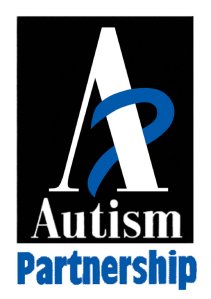 “I marvel at people who can sit down and stay seated in the same position for longer than five minutes. I found this internal restlessness especially difficult to control during school. Trying to stay focused during a 40-minute class while sitting in an uncomfortable chair was pretty torturous for a young student with attention issues. I remember asking to go to the restroom during most classes, not because I needed to use the facilities but because I needed a minute to get up a walk around.”
“I marvel at people who can sit down and stay seated in the same position for longer than five minutes. I found this internal restlessness especially difficult to control during school. Trying to stay focused during a 40-minute class while sitting in an uncomfortable chair was pretty torturous for a young student with attention issues. I remember asking to go to the restroom during most classes, not because I needed to use the facilities but because I needed a minute to get up a walk around.”
These are the words of Jillian Levy, a young women who, for most of her schooling years, struggled with the basic premise of the traditional classroom: to sit down and pay attention. Often thought of as restless, unfocused, or lazy students with ADHD are labeled early on in their academic career as “that kid with behavior problems”. Not to say there isn’t a rampant diagnosis of this disorder (as previously discussed in The Smart Drug Debate), but those who really do have this internal restlessness are genuinely challenged with the tasks that others, myself included, take for granted. For example, when I was in school I learned very early on to raise my hand when I wanted to ask a question or contribute to the class discussion. I would have never dreamed of calling out the answer without adhering to this protocol! But students with ADHD take a more logical and less systematic approach: “If I know the answer, why wouldn’t I call it out? And why aren’t the other kids in my class calling it out too? Well, I guess they don’t know the answer or don’t want to say it out loud.”
The scientific community is really just beginning to put these mysterious pieces of the puzzle together and finally give the general public some real data on the brain science behind ADHD. The educational community, however, is far behind the mark of discovery. Science and technology spearhead change while education and law wait for the numbers to come through. Meanwhile, these students, many of whom are on my Private Tutoring Plus and Education Advocacy rosters, are misunderstood and labeled as a distraction. You have to wonder: how many kids with ADHD are sitting in the principal’s office?
As a person and provider who cares deeply about advocating for those who are unable to advocate for themselves, I’m not waiting for education to catch up with what we already know. Instead, I believe we can change the course of these students lives by helping them understand their own behaviors– creating logical, common sense pathways for positive change through honest conversations with students, their parents, and their school; employing trained therapeutic aides who teach appropriate behavior cues and responses; provide our teachers with effective classroom management training with follow-ups to ensure accountability; and advocate for administrative acceptance of a school-wide rewards and consequences system. If you think these ideas are far-fetched, think again. I’ve seen this in action at schools that are willing to take the hard road and work with the individual in need, not by singling the student out and risking social stigma but, rather by incorporating those systems into the classroom for all students.
Jillian Levy writes, “I am fully aware that having ADHD is a lifelong experience. Everyday I have moments where I feel restless and irritable. However, I try very hard to not let my learning and attention issues control my life. I’m always working to understand why certain situations may trigger symptoms, moving forward with the knowledge that I’m not perfect and that mistakes—whether intentional or not—are human nature.”
I love the way she summed it all up, don’t you. It’s a simple reminder that we must first acknowledge our differences but also take action, learning to move forward in order to create change for ourselves and those around us. After all, that’s really what education is about anyways– a lifelong journey of discovering something greater than ourselves.
Our Services & Helpful ADHD Resources:
- Terry Tutors Services: Private Tutoring Plus for Learning Differences & In-School Behavior Support
- Terry Tutors Services: Education Advocacy for SST & IEP Support, Attendance, and Review
- Student Behavior Management Chart:Developed by a School Psychologist with my input concerning observation, behavior cues, language, criteria, and external motivators
- National Institute of Mental Health: ADHD
- Controlling My Internal Restlessness: How I Learned to Manage My ADHD by Jillian Levy, National Center for Learning Disabilities Team
—
SUBSCRIBE for new posts every Family Friday!
–
Christine Terry, J.D., is the Founder & Owner of Terry Tutors, a Private Tutoring, Family Coaching, and Education Advocacy service dedicated to supporting the whole student. She writes this blog as an effort to help Moms & Dads Navigate Generation Z, Honestly. Want to Know More? Head on over to TerryTutors.com

